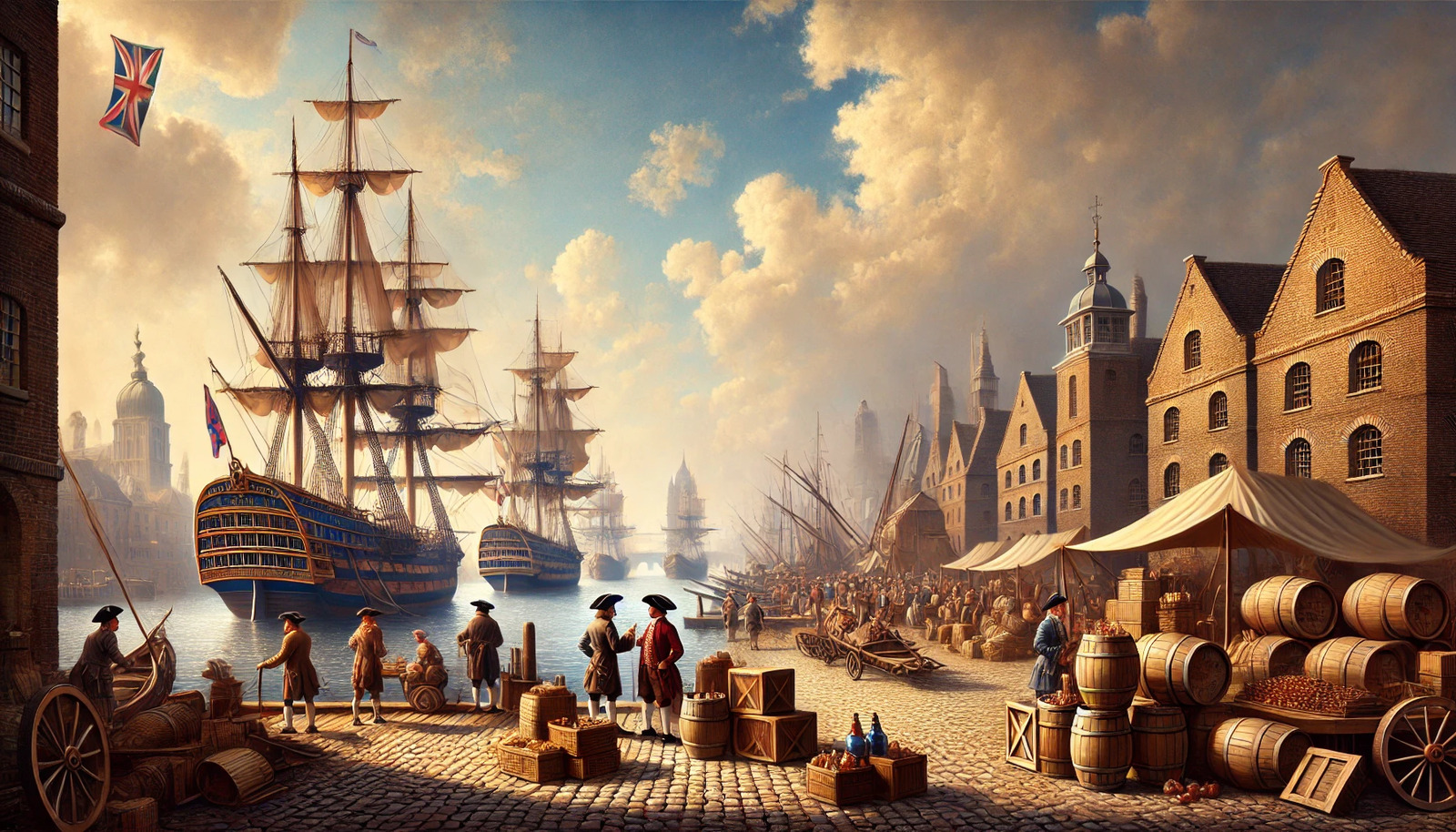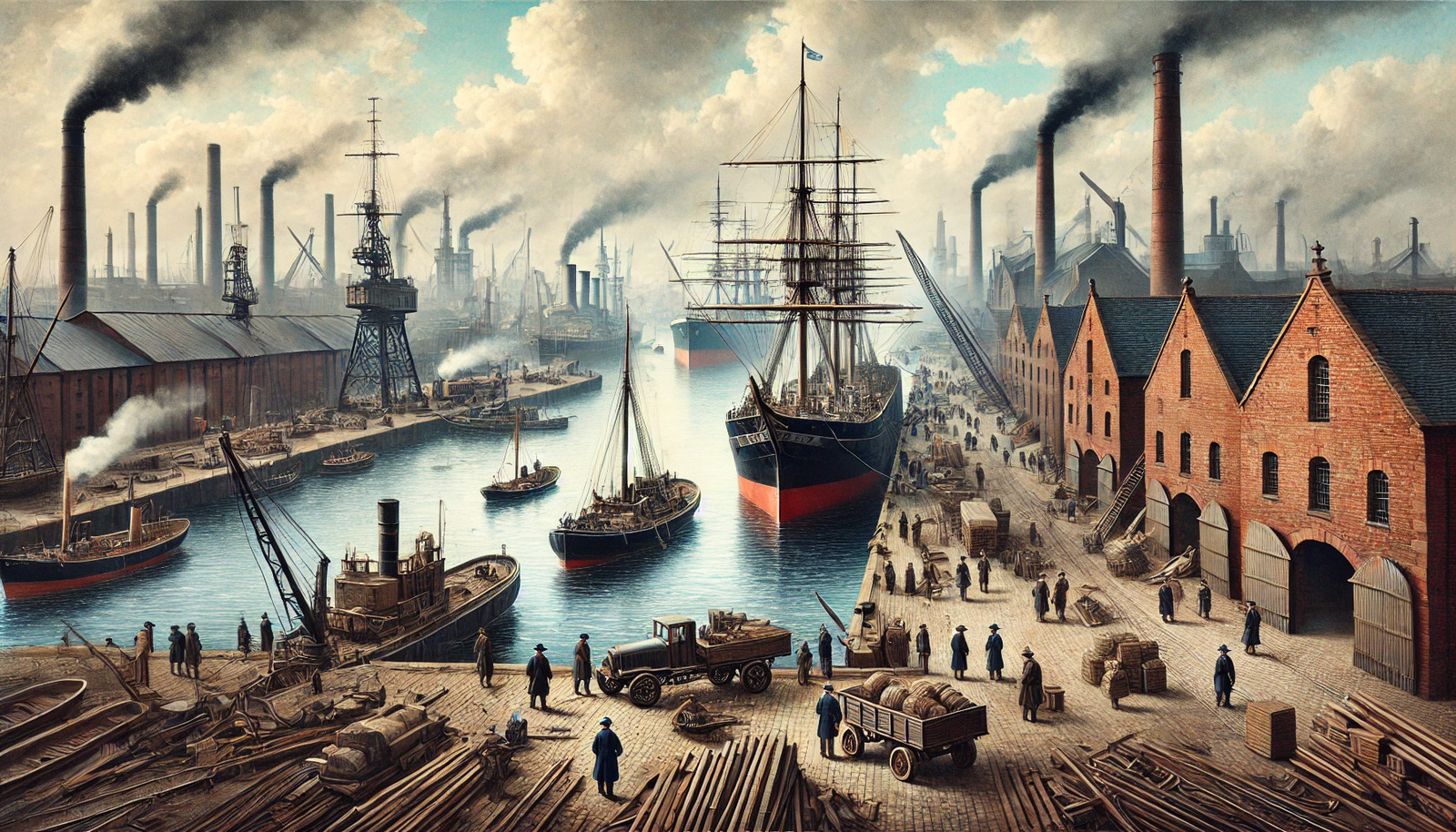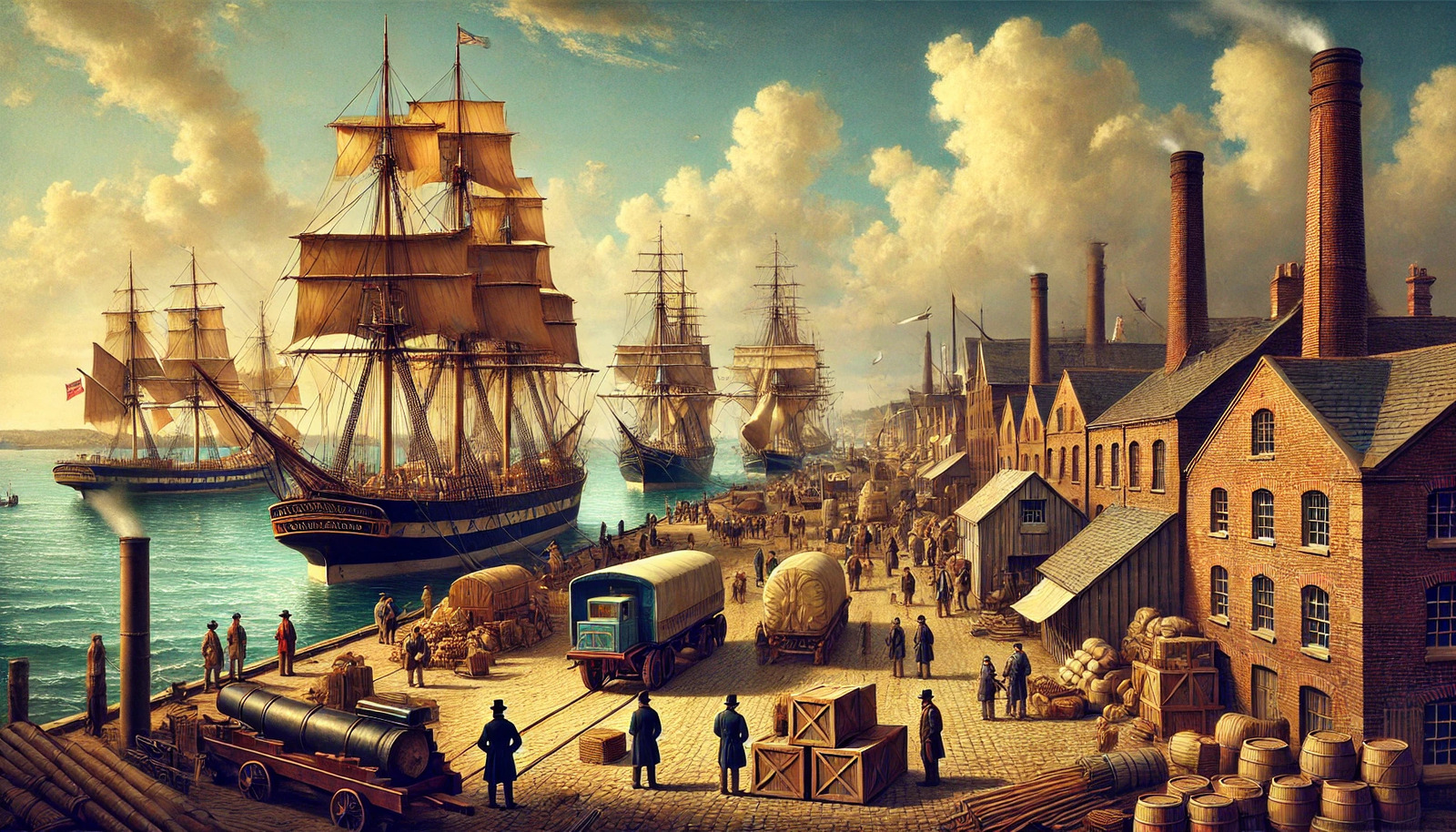
The United Kingdom, an island nation with an illustrious maritime history, owes much of its economic development and global influence to its shipping ports. From the bustling docks of London to the industrial giants of Liverpool and Glasgow, the story of Britain’s shipping ports is one of trade, exploration, and technological advancement. This article explores the fascinating history of some of the UK’s most famous shipping ports and their enduring significance.
1. Port of London: The Gateway to the World.
The Port of London has long been at the heart of Britain’s maritime legacy. Located along the River Thames, its origins date back to Roman times when Londinium became a crucial trading post. By the medieval era, the port had become a central hub for importing luxury goods, such as wine and spices, from across Europe and Asia.
During the height of the British Empire in the 18th and 19th centuries, the port expanded rapidly with the construction of the London Docklands, including the West India Docks and St. Katharine Docks. These docks facilitated the import of sugar, tobacco, and cotton from Britain’s colonies. The East India Company, headquartered near the port, played a significant role in shaping global trade routes.
However, the port’s importance declined in the 20th century with the rise of containerization and the shift of trade to larger, more modern ports. Today, the Port of London remains active, though much of its former glory is preserved in museums and redeveloped areas, such as Canary Wharf.

2. Liverpool: The Pulse of the Industrial Revolution.
Liverpool, situated on the banks of the River Mersey, is synonymous with Britain’s industrial success. Its rapid development began in the 18th century, when it became a key player in the triangular trade, transporting goods, slaves, and raw materials between Britain, Africa, and the Americas.
The construction of the Liverpool Docks in the early 1700s revolutionized maritime logistics. The Albert Dock, opened in 1846, was one of the first dock complexes to be constructed using iron and stone, making it highly secure and fire-resistant. Liverpool’s prosperity was further boosted by its role in the transatlantic trade, particularly in cotton and textiles, which fueled the factories of northern England.
Despite suffering significant damage during World War II, Liverpool recovered and remains a vital port today. The modernized Liverpool2 container terminal has re-established its importance in global shipping, while the city’s maritime heritage is celebrated at the Merseyside Maritime Museum.
3. Bristol: A Center for Trade and Exploration.
Bristol’s maritime history is steeped in adventure, innovation, and darker chapters of British trade. Situated along the River Avon, it was an important medieval port that rose to prominence in the 17th and 18th centuries.
Bristol played a central role in the transatlantic slave trade, exporting manufactured goods to Africa and returning with enslaved individuals and sugar from the Caribbean. Wealth generated from this trade financed the city’s development, including the construction of iconic landmarks like the Floating Harbour, completed in 1809.
In addition to its controversial role in the slave trade, Bristol was home to maritime innovation. The SS Great Britain, designed by Isambard Kingdom Brunel, was the first iron-hulled, screw-propelled ship and revolutionized ocean travel.
Today, the harbor has transformed into a cultural and recreational space, with museums such as the M Shed and the restored SS Great Britain highlighting Bristol’s maritime legacy.

4. Glasgow: Scotland’s Industrial Powerhouse.
Glasgow, located on the River Clyde, became a global center for shipbuilding and engineering during the 19th and early 20th centuries. Originally a small fishing village, it grew rapidly with the expansion of trade, particularly in tobacco, sugar, and cotton.
By the 19th century, the Clyde had been dredged and widened to accommodate larger vessels, leading to Glasgow’s emergence as a shipbuilding powerhouse. Legendary ships such as the RMS Lusitania and HMS Hood were built in its shipyards, cementing the city’s reputation.
The decline of heavy industry and shipbuilding after World War II hit Glasgow hard, but the city has since reinvented itself. The Clyde Waterfront redevelopment project has revitalized the area, and institutions like the Riverside Museum showcase Glasgow’s maritime achievements.
5. Southampton: The Gateway for Passenger Travel.
Southampton has long been associated with luxury liners and passenger travel. Its deep-water port, located on the south coast of England, made it ideal for large ships. During the early 20th century, it became the home port for famous ocean liners, including the RMS Titanic, which departed from Southampton on its ill-fated voyage in 1912.
The port also played a significant role during both World Wars, serving as a departure point for troops and supplies. In the post-war era, Southampton adapted to the changing maritime industry by focusing on container shipping and cruise liners. Today, it is one of Europe’s busiest cruise terminals and a key part of the UK’s global trade network.
Conclusion.
The history of the UK’s famous shipping ports is a testament to the country’s maritime prowess and adaptability. From London’s global trade dominance to Glasgow’s industrial might and Southampton’s luxurious passenger travel, these ports have shaped the nation’s identity and economy for centuries. As they continue to evolve in response to modern demands, their historical significance remains an enduring part of Britain’s legacy.


